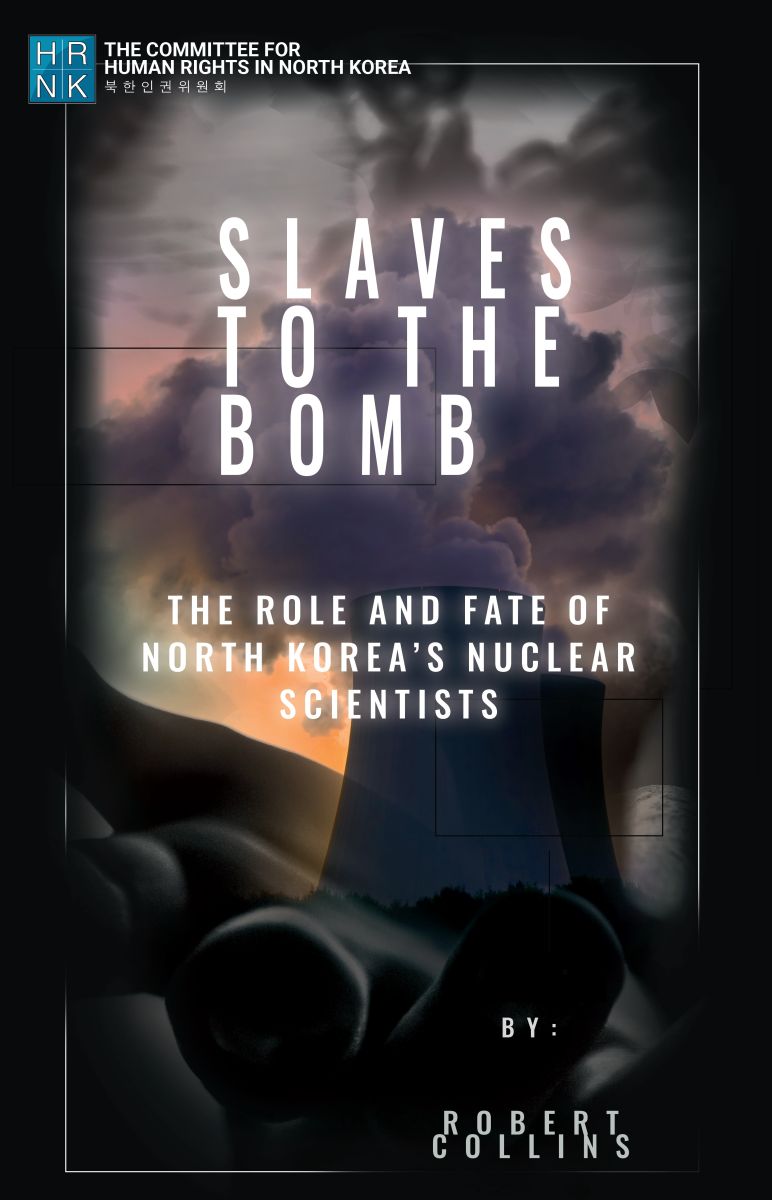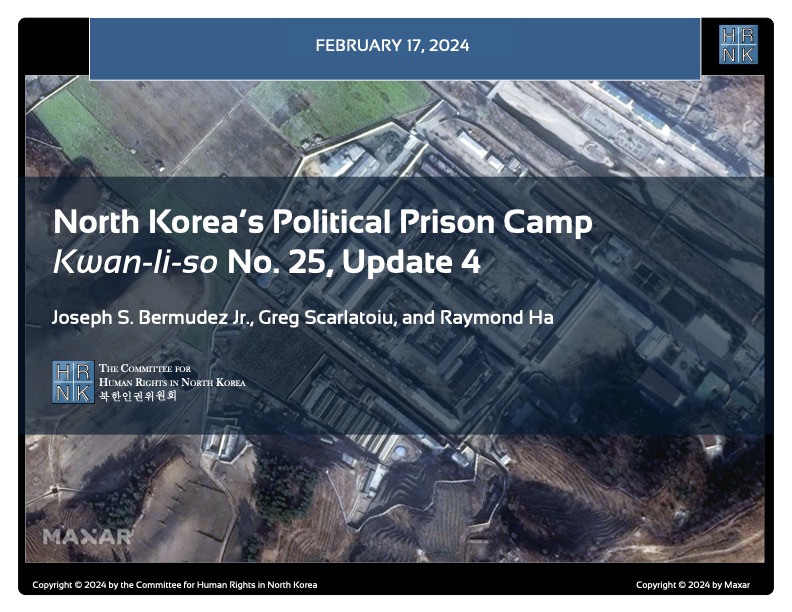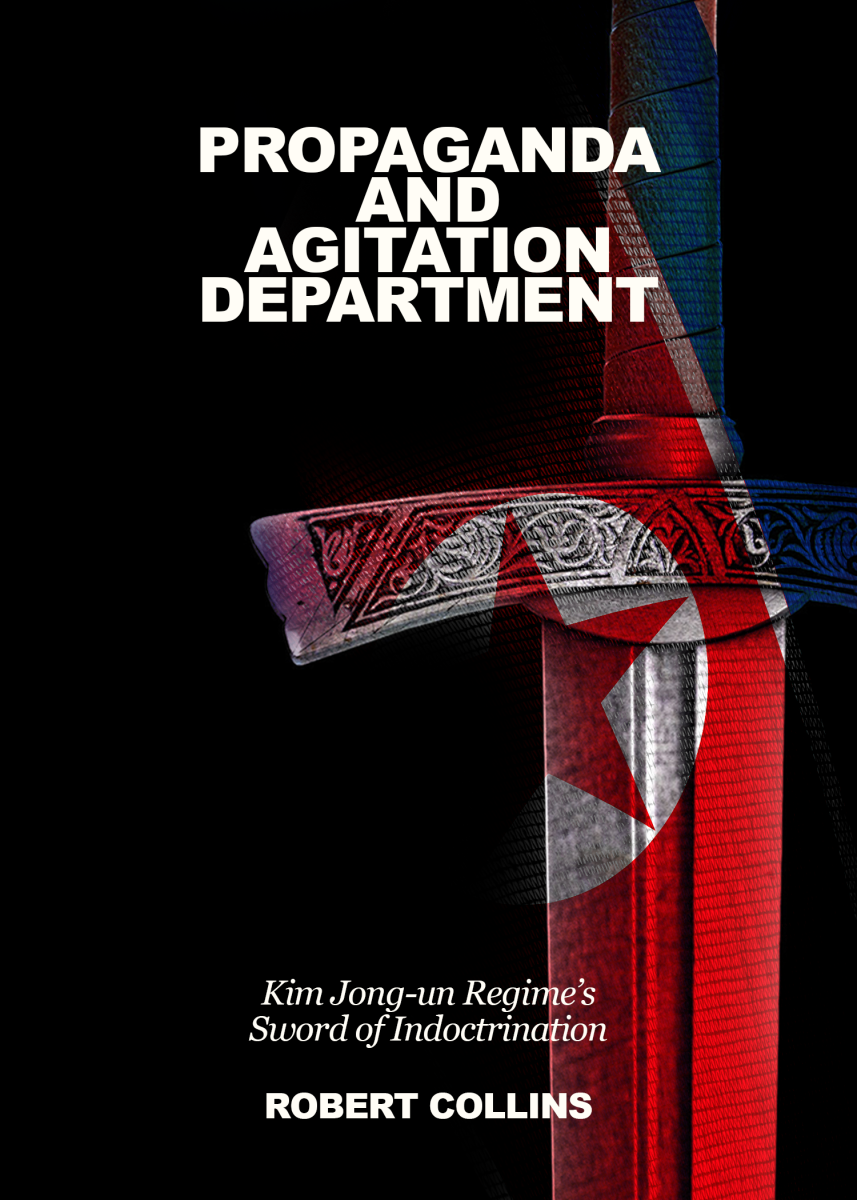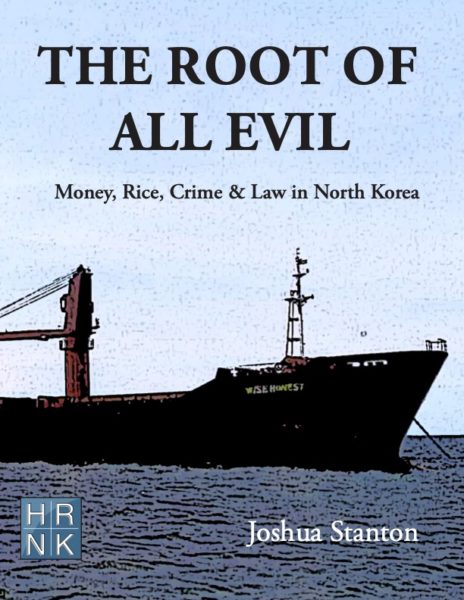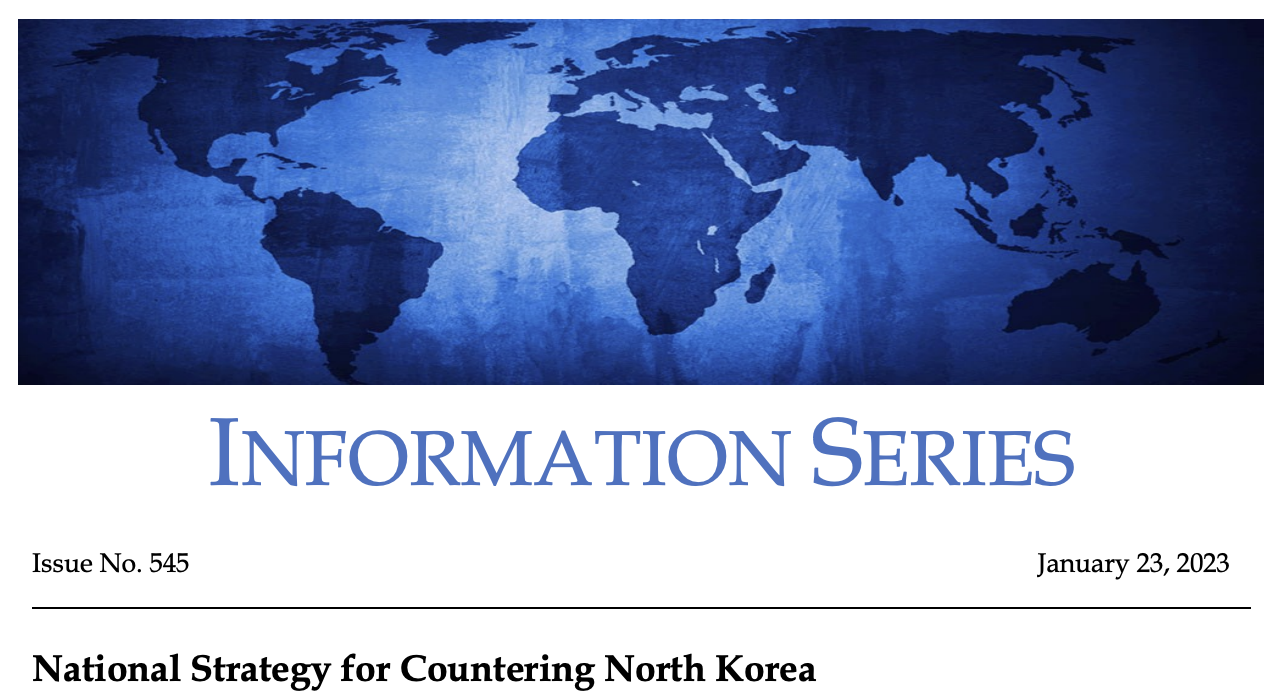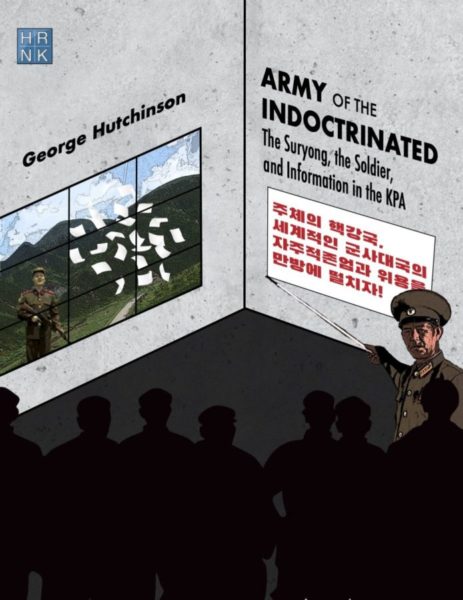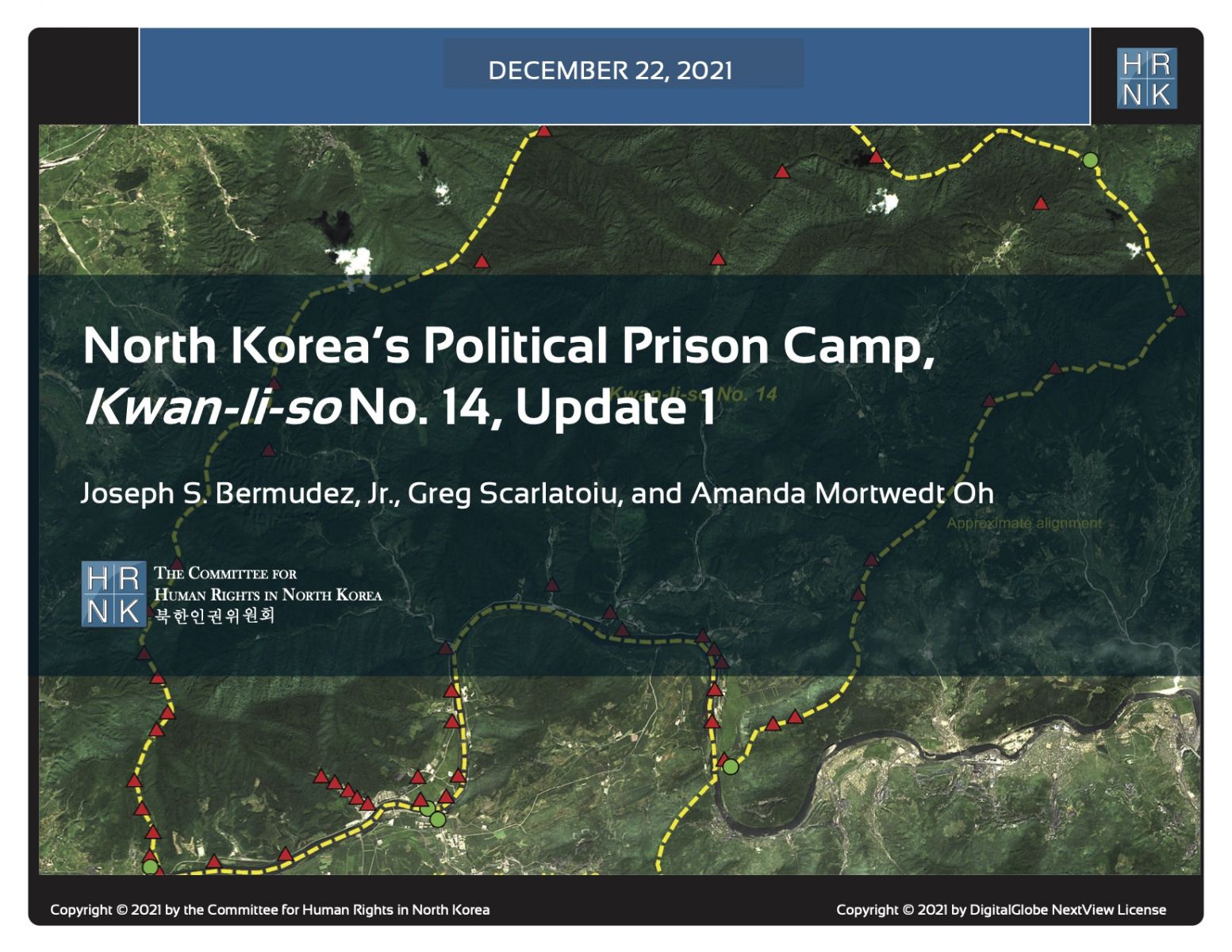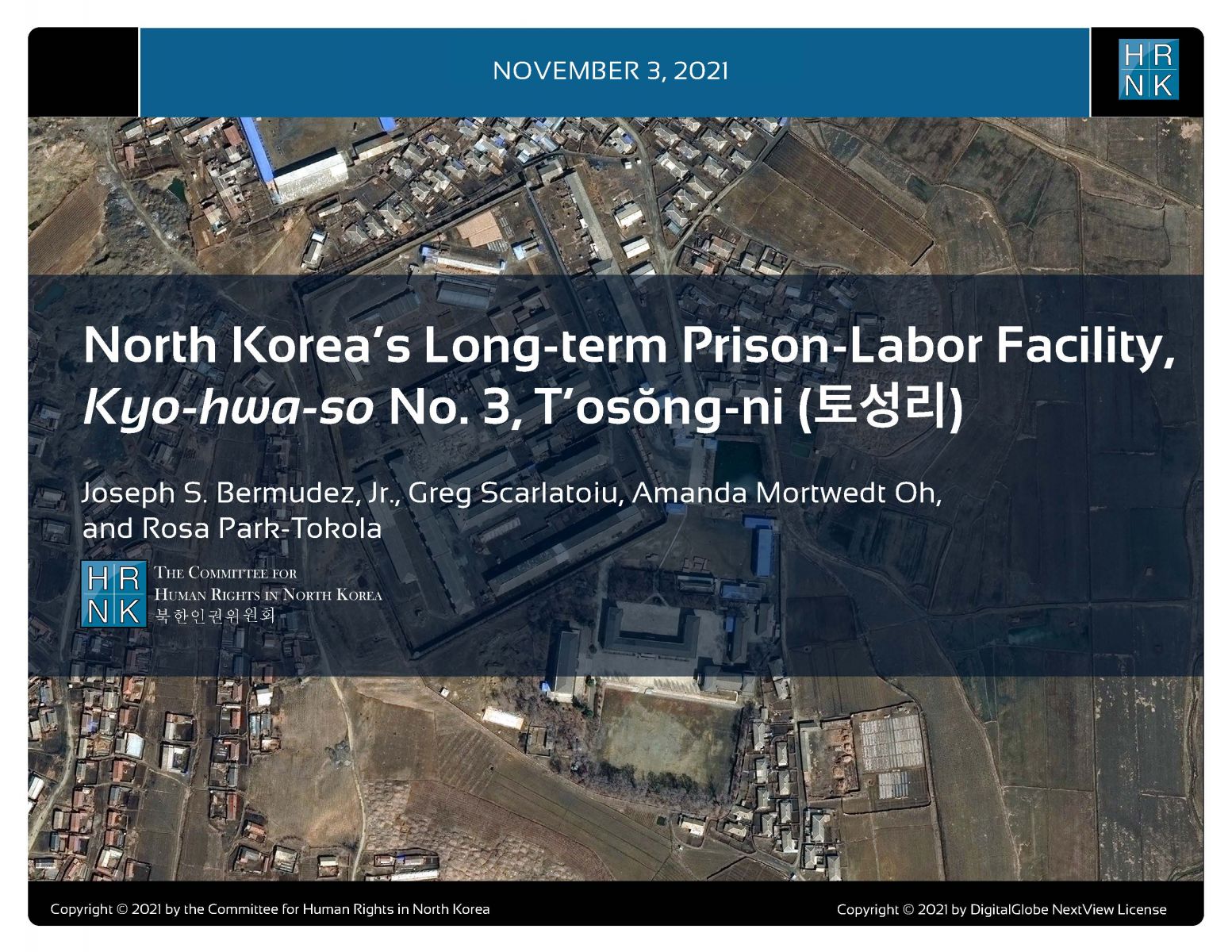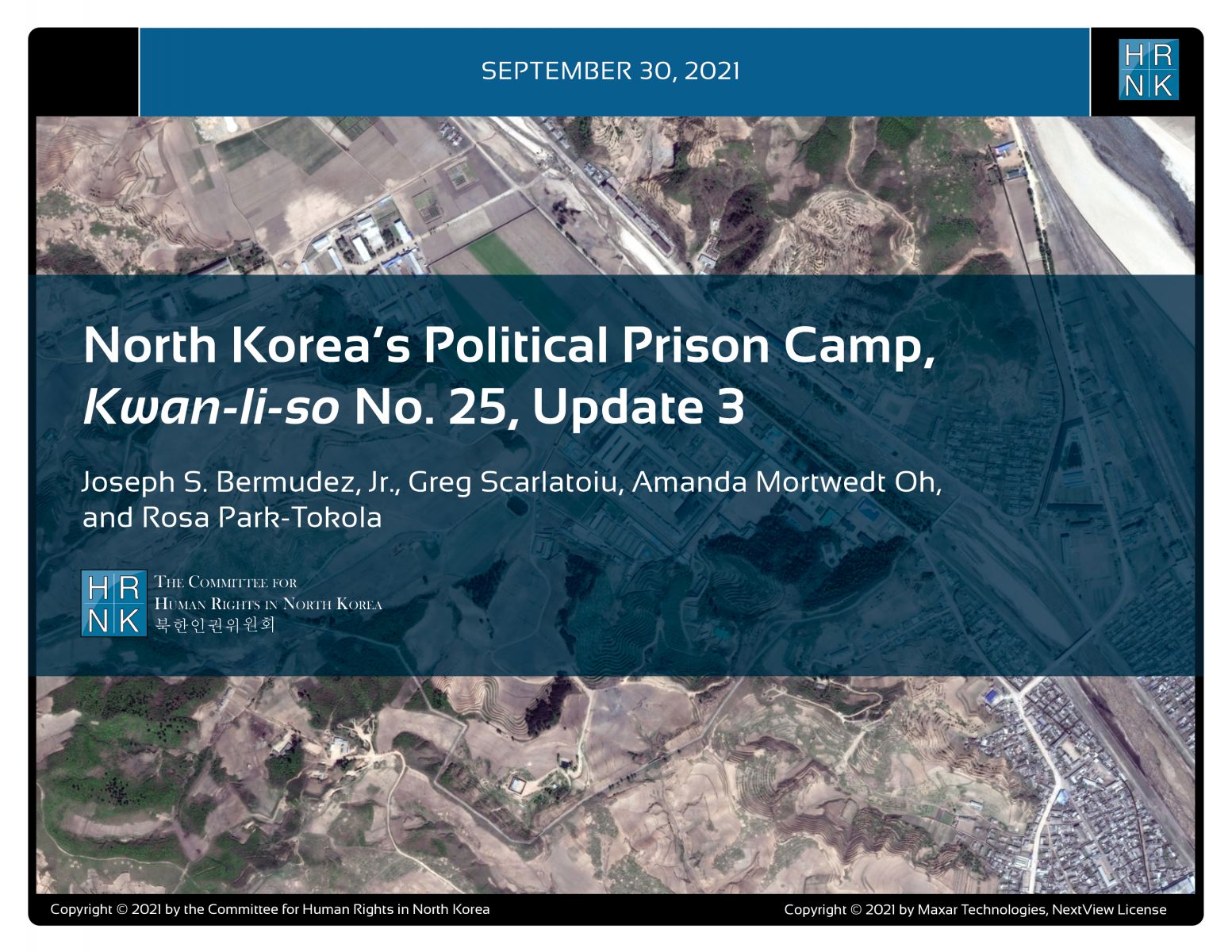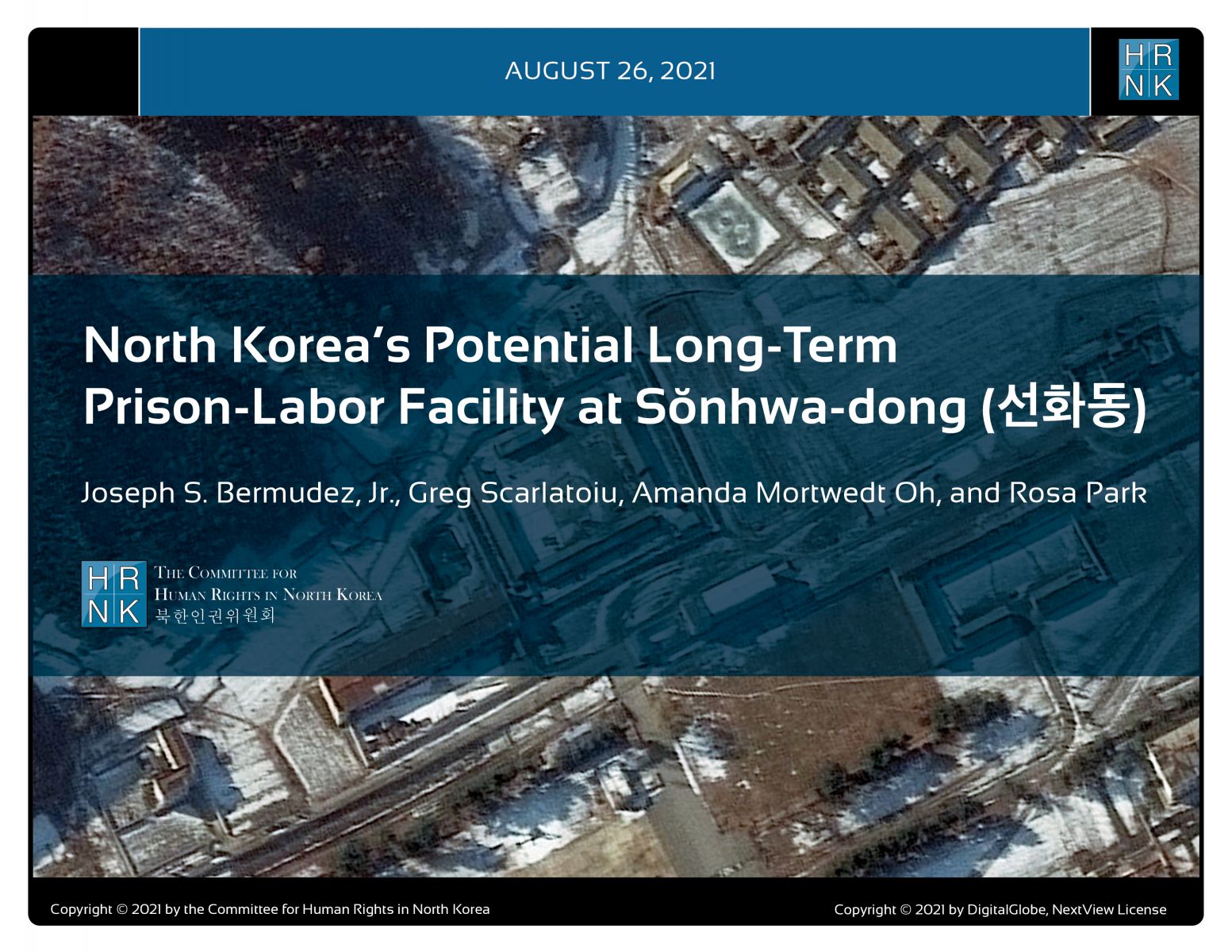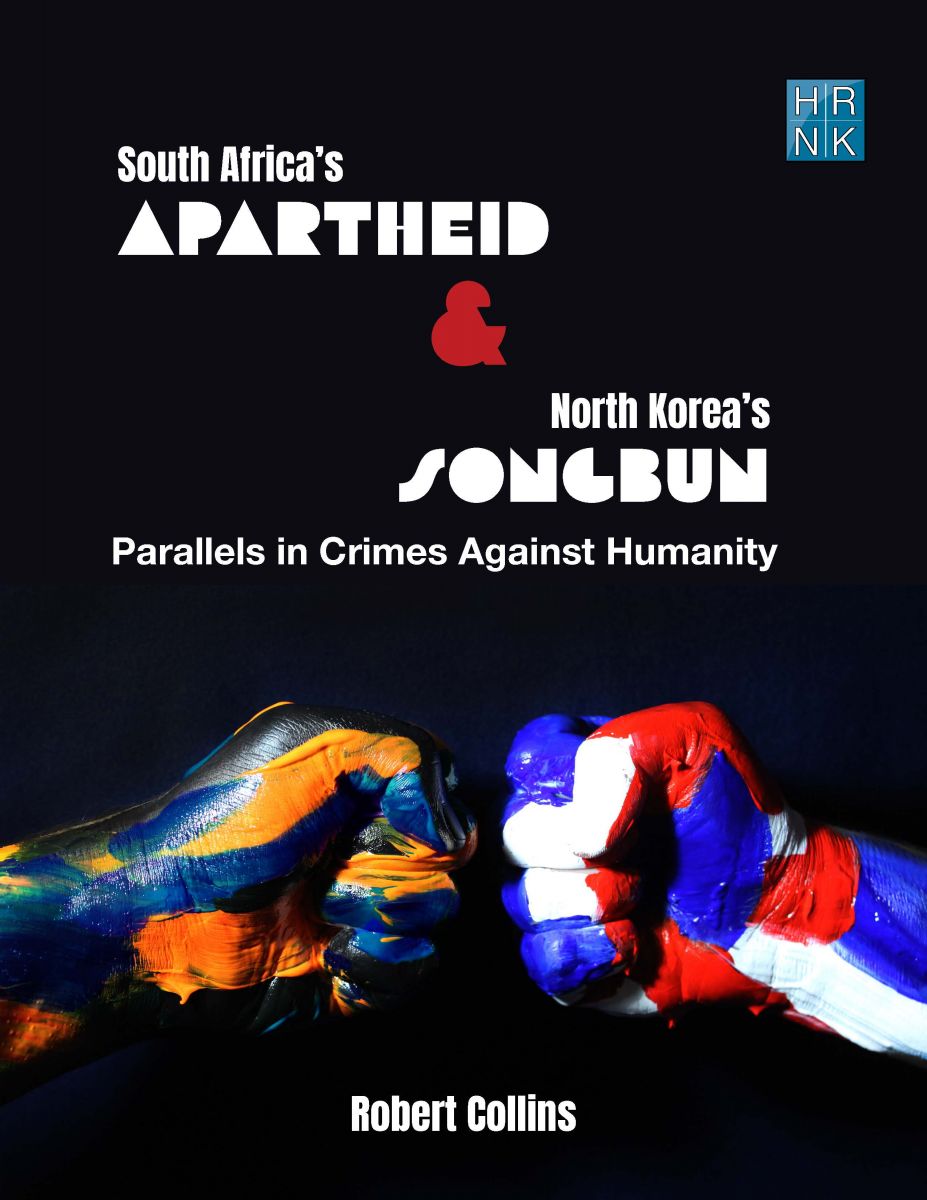PRESS RELEASE
Tuesday, December 15, 2015
The Committee for Human Rights in North Korea (HRNK) and AllSource Analysis (AllSource) Launch Report Based on Satellite Imagery of North Korea’s Political Prison Camp No. 16
Report Identifies Likely Increase in Prisoner Population. Have Preparations Been Made for Intense, Prolonged Use of Deadly Force against Prisoners?
The Committee for Human Rights in North Korea (HRNK), a non-governmental organization based in Washington, D.C. and AllSource Analysis (AllSource), a leading global provider of high-resolution earth imagery solutions, have launched a report entitled North Korea Imagery Analysis of Camp 16. Political Prison Camp No. 16 (a.k.a. Kwan-li-so No. 16) is located in Hwasong-gun in North Korea’s North Hamgyong Province, approximately 70 km southwest of Chongjin City. The camp is the largest of North Korea’s such unlawful detention facilities. Camp 16 occupies an irregularly shaped area measuring approximately 30 km by 35 km (18.4 mi by 21.7 mi). The 119 km camp perimeter encompasses 53 named “villages” and numerous unnamed “villages” across an area of 53,900 hectares (539 sq. km). Of North Korea’s four currently operational political prison camps, Camp 16 is the only one with no known witnesses or escapees.
The report can be downloaded from HRNK’s website (HRNK.ORG), together with other HRNK publications. For this report, AllSource used pan-sharpened satellite imagery collected by DigitalGlobe and Airbus Defense and Space from April 2013 to January 2015. The report also used a declassified KH-9 satellite image taken in October 1983.
Contrary to popular opinion, Camp 16 is not completely enclosed within a single fixed security fence or wall. Only the lower third of the camp has an actual fence. The remainder of the perimeter appears to be patrolled primarily by troops on foot, given the absence of vehicles along the perimeter. Although guard positions are not positioned to provide overlapping fields-of-view of the camp, they appear to be well maintained, and are located along the most obvious escape routes. Parts of the perimeter are supported by several double and triple-walled guard positions. The presence of these guard positions seems to confirm what North Korean escapees told The Korea Institute for National Unification (KINU), i.e. that Camp 16 guards had reportedly spoken of elevated guard posts equipped with machine guns, meant to “massacre prisoners in emergency situations.” The presence of what appears to be an armory secured by an earthen berm, interior wall, exterior fence, and a guard post, identified through the satellite imagery, may indicate that preparations have been made for intense, prolonged use of deadly force against camp prisoners.
Based on this recent satellite imagery analysis, Camp 16 continues to operate as North Korea’s largest political prison camp. The camp remains active, even in recent winter imagery, focusing primarily on logging, agricultural fields, orchards, livestock, a few fish farms, mining, light industry, and hydroelectric power generation. Satellite imagery analysis appears to confirm sustained, if not increased economic activity at the camp. Corroborated with previous HRNK/AllSource reports on Camps 14 and 25, the report on Camp 16 seems to confirm an evolving pattern of increased economic activity within North Korea’s political prison camps.
During the period under study, there has been an increase in the number of housing units and support buildings. HRNK Executive Director Greg Scarlatoiu said: “Although analytical caution is essential, especially in the absence of direct testimony from former Camp 16 prisoners or guards, the significant expansion of housing units seems to indicate that there has been an increase in the prisoner population. This increase may have been the result of prisoner transfer from facilities that have been closed, such as Camp 22 in Hoeryong near the border with China. The increase may also be the result of more people being imprisoned due to the ongoing crackdown on attempted defections and purging of senior officials.”
Joseph Bermudez, AllSource co-founder and chief analytics officer, said: “As reports continue to emerge on possible developments at North Korea’s P’unggye-ri nuclear test facility, it will also be important to keep a watchful eye on Camp 16 Hwasong, located only 2.5 kilometers to the east of P’unggye-ri, because of the possible nexus between prison labor at this very active political prison camp and North Korea’s nuclear tests.”
Bermudez, an internationally recognized analyst, award winning author, and lecturer on North Korean defense and intelligence affairs, previously testified before the United Nations Commission of Inquiry on Human Rights in the Democratic People’s Republic of Korea (UN COI) on North Korea’s increased focus on “the development of nuclear weapons and other ‘asymmetrical forces’ such as special operations forces, chemical and biological weapons, and mini-submarines” at a time when its overall “military capability has been steadily decreasing due to obsolescence of equipment, difficulty in training, and lowering of standards for soldiers following the overall decline in nutritional status of the population and its subsequent impact on the height of prospective recruits.” Bermudez further noted, “Continued monitoring of Camp 16 will help identify whether prisoners have been or are currently being used to support the P’unggye-ri nuclear test site and determine the extent of human rights abuses at that camp.”
The report is the latest step in a collaborative effort by HRNK and AllSource to create a clear picture of the evolution and current state of North Korea’s political prison camps. HRNK is the NGO that put North Korea’s penal labor colonies on the map by publishing Hidden Gulag in 2003, Hidden Gulag Second Edition in 2012, North Korea’s Hidden Gulag: Interpreting Reports of Changes in the Prison Camps in 2013, and The Hidden Gulag IV: Gender Repression & Prisoner Disappearances in 2015, all authored by world-renowned investigator David Hawk. Together, the two organizations have been closely monitoring North Korea’s political prison camps so that any attempts to distort the harsh reality of the camps by destroying evidence will not go unnoticed. In a speech given before the 7575th meeting of the UN Security Council on December 10, 2015, U.S. Ambassador Samantha Power quoted some of the findings of The Hidden Gulag IV.
The report North Korea Imagery Analysis of Camp No. 16 is available on HRNK’s website:
https://www.hrnk.org/uploads/pdfs/ASA_HRNK_Camp16_v8_fullres_FINAL_12_15_15.pdf
Contact: Greg Scarlatoiu, Executive Director
[email protected]; 202-499-7973
This is the first satellite imagery report by HRNK on a long-term political prison commonly identified by researchers and former detainees as Kwan-li-so No. 18 (Pukch'ang). This report was concurrently published on Tearline at https://www.tearline.mil/public_page/prison-camp-18.
To understand the challenges faced by the personnel who are involved in North Korea’s nuclear program, it is crucial to understand the recruitment, education, and training processes through the lens of human rights. This report offers a starting point toward that understanding. North Korea’s scientists and engineers are forced to work on the nuclear weapons program regardless of their own interests, preferences, or aspirations. These individuals may be described as “moder
In this submission, HRNK focuses its attention on the following issues in the DPRK: The status of the system of detention facilities, where a multitude of human rights violations are ongoing. The post-COVID human security and human rights status of North Korean women, with particular attention to sexual and gender-based violence (SGBV). The issue of Japanese abductees and South Korean prisoners of war (POWs), abductees, and unjust detainees.
This report provides an abbreviated update to our previous reports on a long-term political prison commonly identified by former prisoners and researchers as Kwan-li-so No. 25 by providing details of activity observed during 2021–2023. This report was originally published on Tearline at https://www.tearline.mil/public_page/prison-camp-25.
This report explains how the Kim regime organizes and implements its policy of human rights denial using the Propaganda and Agitation Department (PAD) to preserve and strengthen its monolithic system of control. The report also provides detailed background on the history of the PAD, as well as a human terrain map that details present and past PAD leadership.
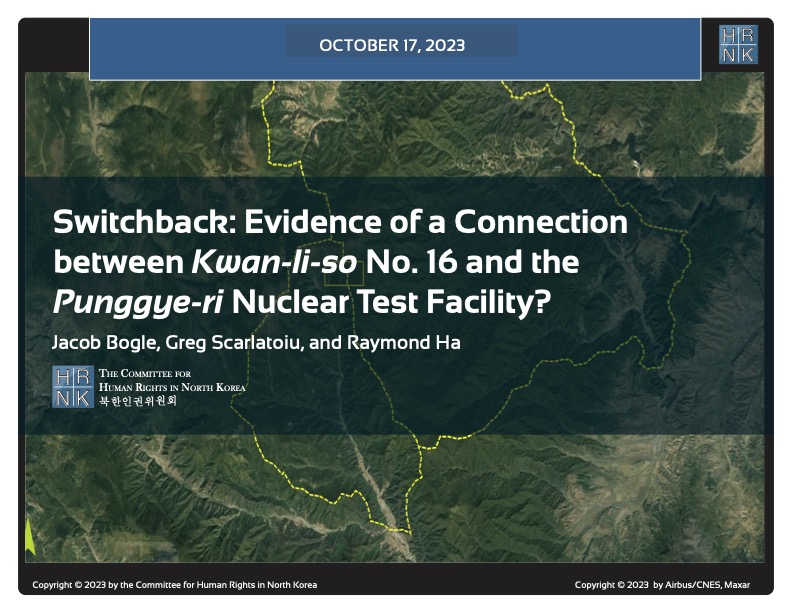
HRNK's latest satellite imagery report analyzes a 5.2 km-long switchback road, visible in commercial satellite imagery, that runs from Testing Tunnel No. 1 at North Korea's Punggye-ri nuclear test facility to the perimeter of Kwan-li-so (political prison camp) no. 16.
This report proposes a long-term, multilateral legal strategy, using existing United Nations resolutions and conventions, and U.S. statutes that are either codified or proposed in appended model legislation, to find, freeze, forfeit, and deposit the proceeds of the North Korean government's kleptocracy into international escrow. These funds would be available for limited, case-by-case disbursements to provide food and medical care for poor North Koreans, and--contingent upon Pyongyang's progress
For thirty years, U.S. North Korea policy have sacrificed human rights for the sake of addressing nuclear weapons. Both the North Korean nuclear and missile programs have thrived. Sidelining human rights to appease the North Korean regime is not the answer, but a fundamental flaw in U.S. policy. (Published by the National Institute for Public Policy)
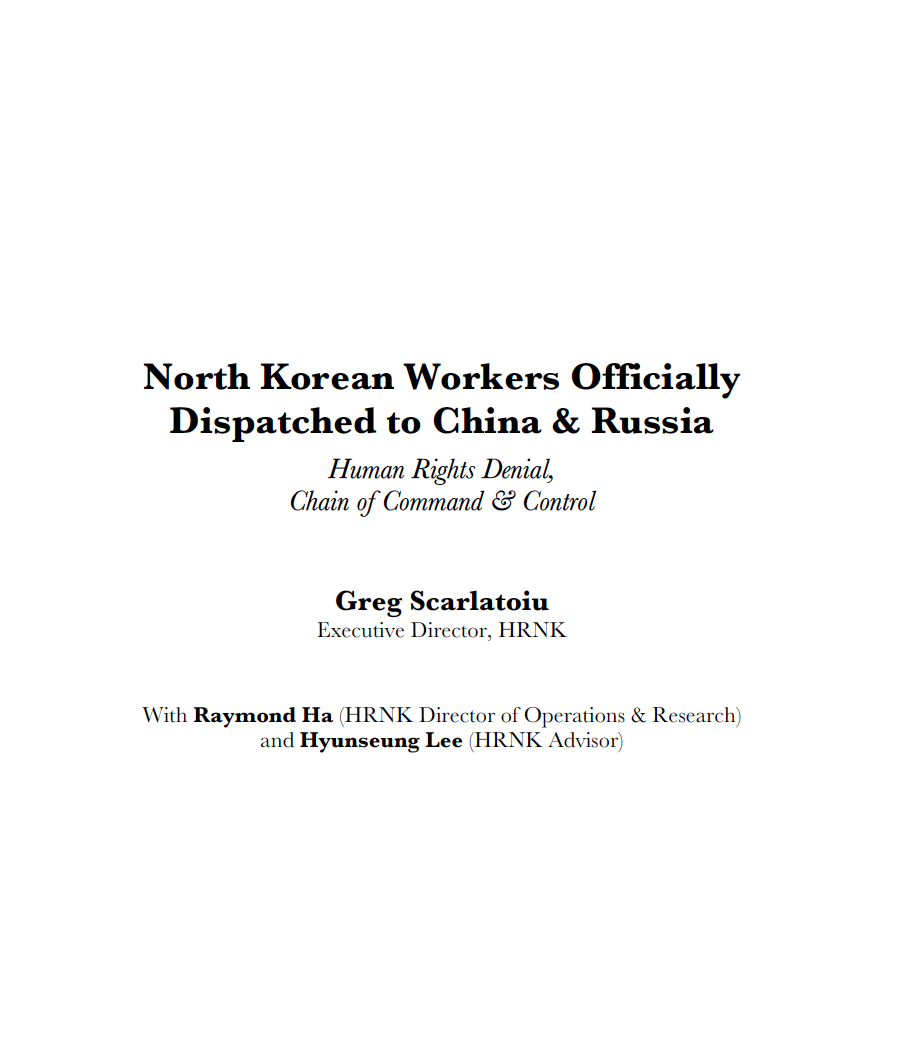
North Korea’s forced labor enterprise and its state sponsorship of human trafficking certainly continued until the onset of the COVID pandemic. HRNK has endeavored to determine if North Korean entities responsible for exporting workers to China and Russia continued their activities under COVID as well.
George Hutchinson's The Suryong, the Soldier, and Information in the KPA is the second of three building blocks of a multi-year HRNK project to examine North Korea's information environment. Hutchinson's thoroughly researched and sourced report addresses the circulation of information within the Korean People's Army (KPA). Understanding how KPA soldiers receive their information is needed to prepare information campaigns while taking into account all possible contingenc
This report is part of a comprehensive long-term project undertaken by HRNK to use satellite imagery and former prisoner interviews to shed light on human suffering in North Korea by monitoring activity at political prison facilities throughout the nation. This is the second HRNK satellite imagery report detailing activity observed during 2015 to 2021 at a prison facility commonly identified by former prisoners and researchers as “Kwan-li-so No. 14 Kaech’ŏn” (39.646810, 126.117058) and
This report is part of a comprehensive long-term project undertaken by HRNK to use satellite imagery and former prisoner interviews to shed light on human suffering in North Korea by monitoring activity at civil and political prison facilities throughout the nation. This study details activity observed during 1968–1977 and 2002–2021 at a prison facility commonly identified by former prisoners and researchers as "Kyo-hwa-so No. 3, T'osŏng-ni" and endeavors to e
This report is part of a comprehensive long-term project undertaken by HRNK to use satellite imagery and former detainee interviews to shed light on human suffering in the Democratic People’s Republic of Korea (DPRK, more commonly known as North Korea) by monitoring activity at political prison facilities throughout the nation. This report provides an abbreviated update to our previous reports on a long-term political prison commonly identified by former prisoners and researchers as Kwan-li-so
Through satellite imagery analysis and witness testimony, HRNK has identified a previously unknown potential kyo-hwa-so long-term prison-labor facility at Sŏnhwa-dong (선화동) P’ihyŏn-gun, P’yŏngan-bukto, North Korea. While this facility appears to be operational and well maintained, further imagery analysis and witness testimony collection will be necessary in order to irrefutably confirm that Sŏnhwa-dong is a kyo-hwa-so.
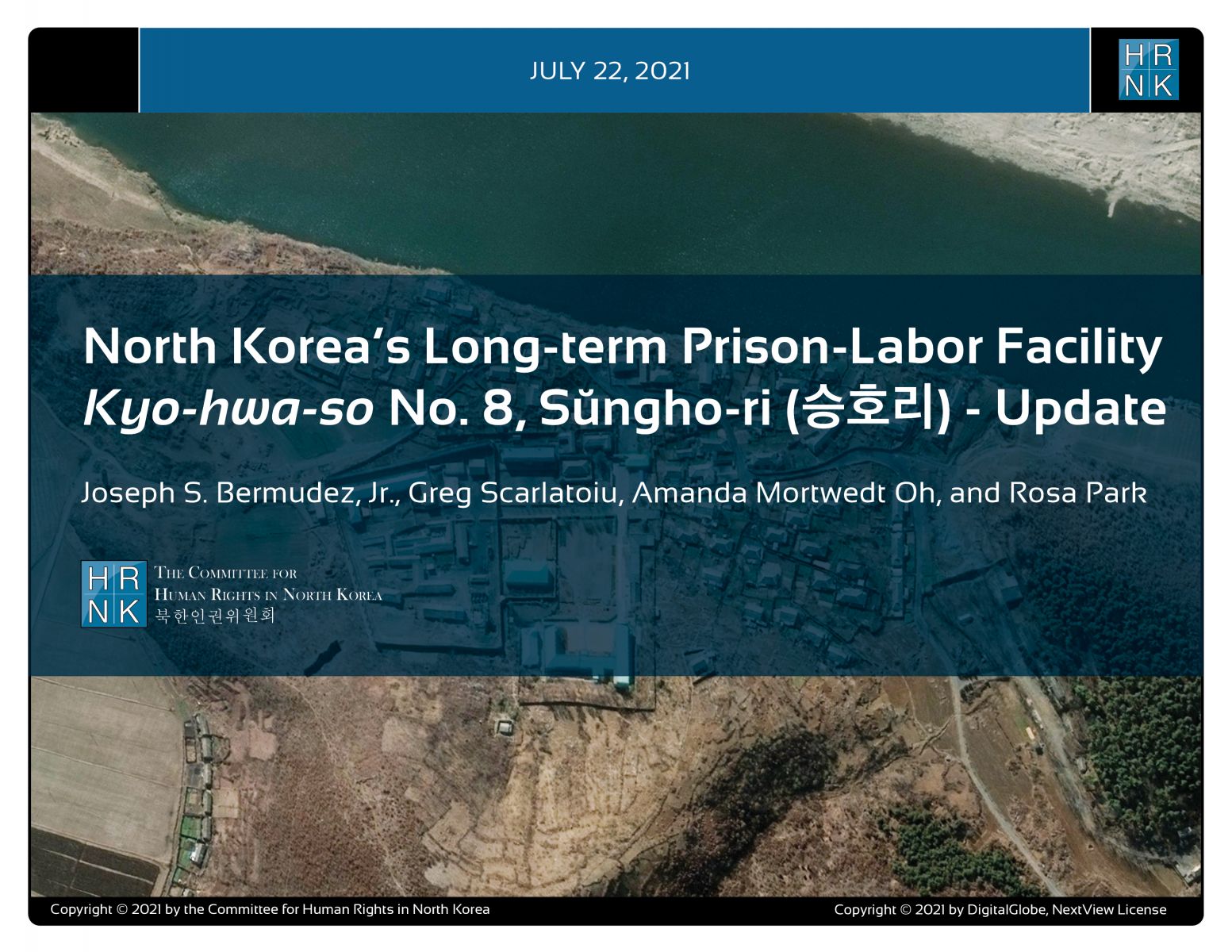
"North Korea’s Long-term Prison-Labor Facility Kyo-hwa-so No. 8, Sŭngho-ri (승호리) - Update" is the latest report under a long-term project employing satellite imagery analysis and former political prisoner testimony to shed light on human suffering in North Korea's prison camps.
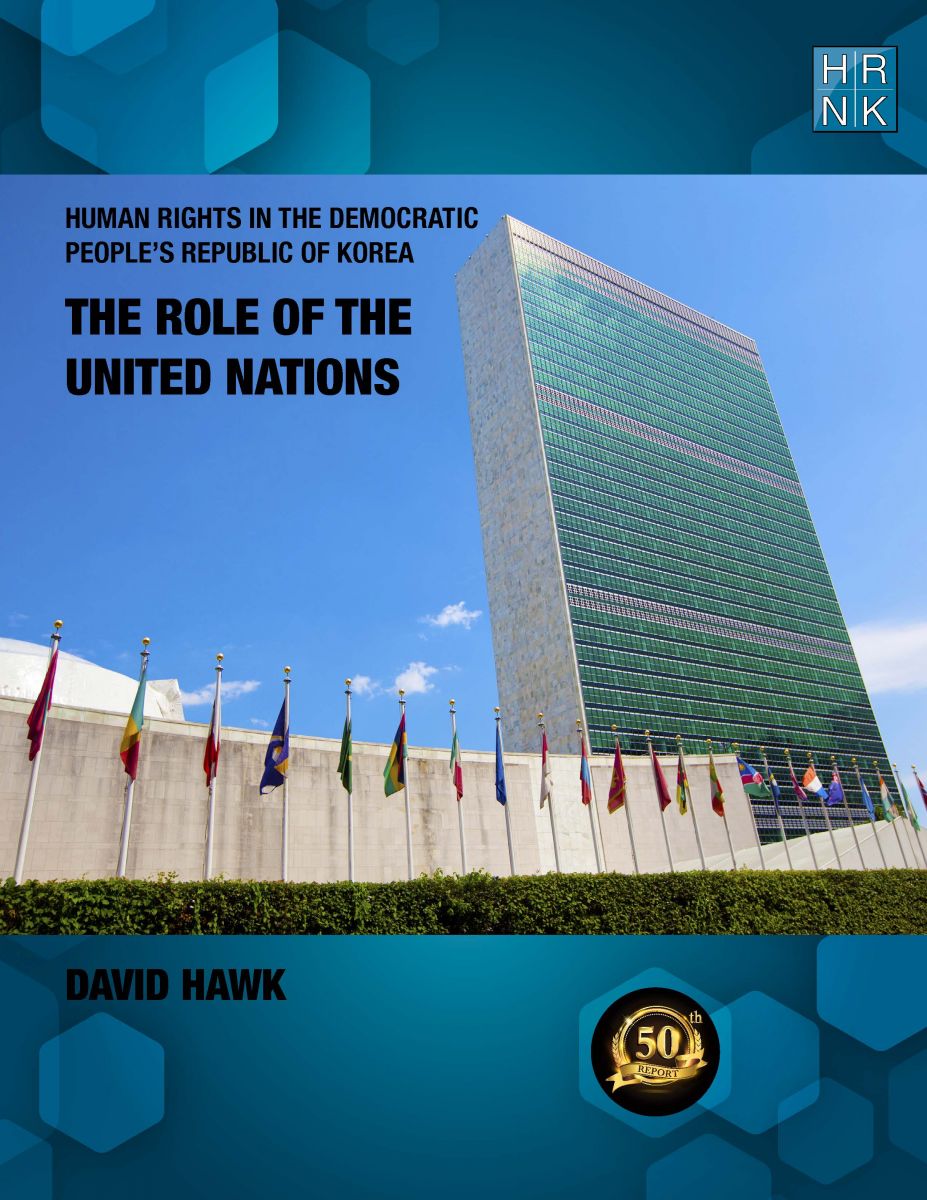
Human Rights in the Democratic Republic of Korea: The Role of the United Nations" is HRNK's 50th report in our 20-year history. This is even more meaningful as David Hawk's "Hidden Gulag" (2003) was the first report published by HRNK. In his latest report, Hawk details efforts by many UN member states and by the UN’s committees, projects and procedures to promote and protect human rights in the DPRK. The report highlights North Korea’s shifts in its approach
South Africa’s Apartheid and North Korea’s Songbun: Parallels in Crimes against Humanity by Robert Collins underlines similarities between two systematically, deliberately, and thoroughly discriminatory repressive systems. This project began with expert testimony Collins submitted as part of a joint investigation and documentation project scrutinizing human rights violations committed at North Korea’s short-term detention facilities, conducted by the Committee for Human Rights

